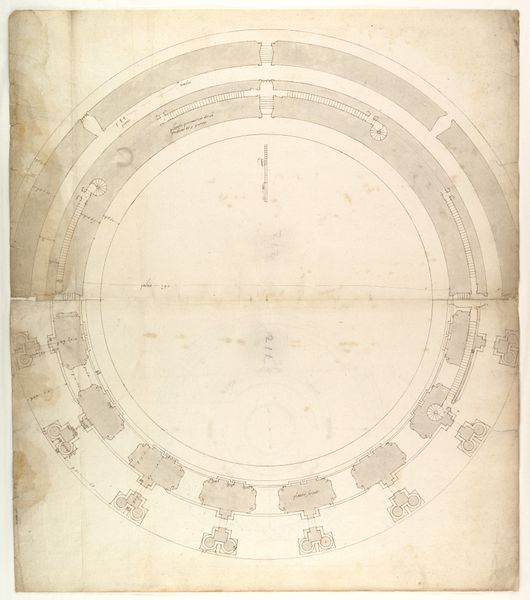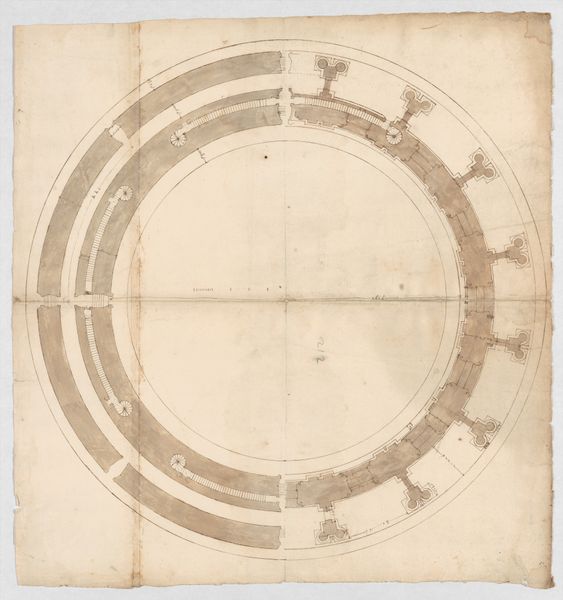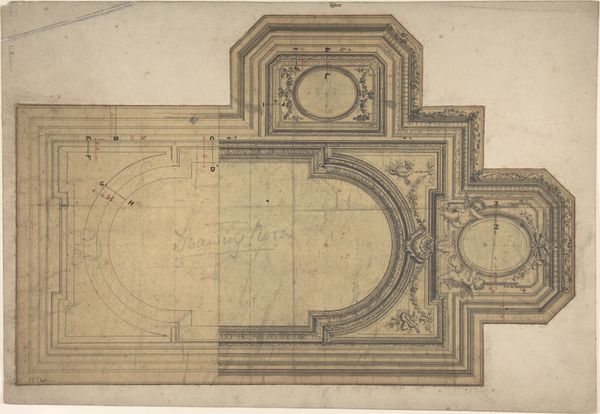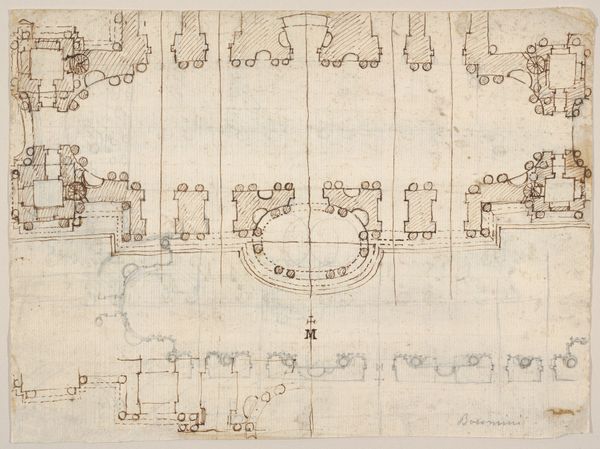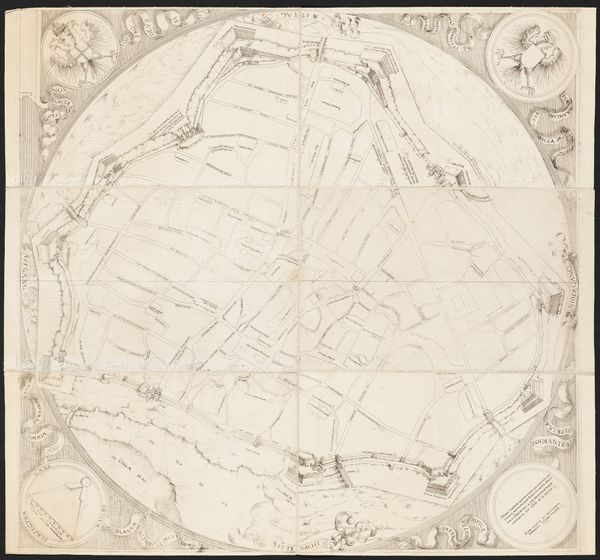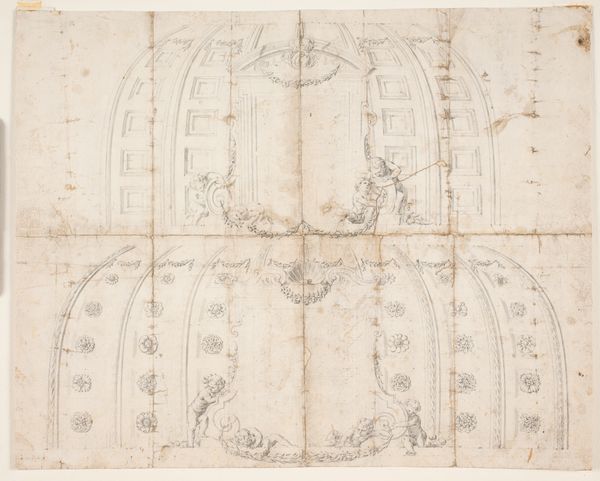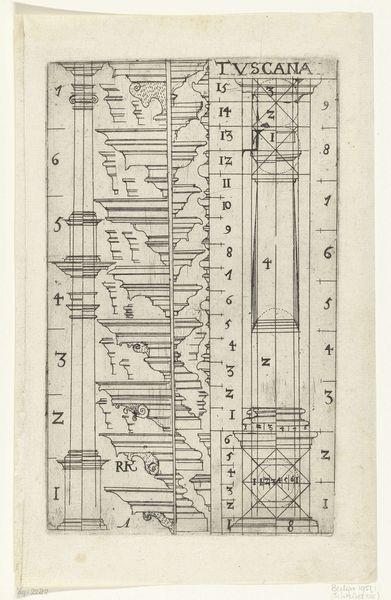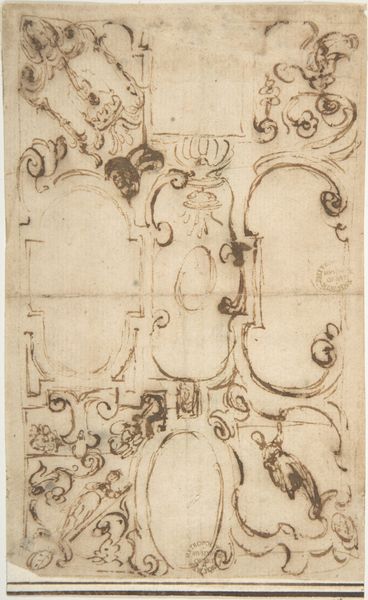
drawing, print, paper, ink, architecture
#
drawing
# print
#
etching
#
paper
#
form
#
11_renaissance
#
ink
#
geometric
#
line
#
italian-renaissance
#
architecture
Dimensions: 8-3/8 x 5-5/8 in. (21.3 x 14.3 cm)
Copyright: Public Domain
Curator: This "Sketch for a Ceiling" from around 1500 to 1600, currently residing at the Metropolitan Museum of Art, presents an interesting glimpse into architectural design of the Renaissance. It's rendered in ink on paper through drawing and etching techniques. What strikes you about this particular sketch? Editor: Well, the immediate impression is of incompleteness, but with an echo of grand ambition. The sweeping curves hint at something opulent, maybe a palace or a church. Even in this fragmented state, you can sense the artist’s vision for a space that feels both powerful and elegant. Curator: That fragmentation is significant. Consider the period; architectural design was shifting from mere functionality to a display of power, prestige and humanist ideals. Ceiling paintings were a potent medium to project social narratives through allegory and symbolism to the upper classes. Editor: Absolutely. The very notion of looking up—literally elevating one's gaze—became a gesture loaded with meaning. The cherub tucked in one corner seems deliberately placed. It brings that symbolic connection of the upper world with the everyday. Curator: True. Its position and presence subtly reinforces the relationship between sacred spaces, their architectural structures, and the communities they are designed to serve. Moreover, you will notice geometric under drawings which shows a great investment of careful and considerate design planning, common during this era, influenced and rooted in the Classics. Editor: Looking at those geometric forms, the shapes are also very imposing. The sheer scope of the ceiling as designed seems to be reaching to make the space more expansive and awe-inspiring to those standing within it. Curator: Precisely, but its incompleteness presents a different viewpoint: How it's an artifact of a time when art patronage was a collaborative process, from architect to master painter. Drawings like these weren't simply blueprints; they were points of negotiation, representing an arena of cultural exchange between those in power, those creating art and the eventual consumer. Editor: So, it’s not just a study for a ceiling but also a historical document reflecting the Renaissance sociopolitical framework, that very fine layer of complexity and nuances woven within these simple strokes on paper. It feels so exciting when seeing those hidden social connections expressed by one artist! Curator: I agree. And that the layers of meaning still speak to us, across centuries, even in a 'simple' drawing. Editor: A sentiment with which I profoundly concur!
Comments
No comments
Be the first to comment and join the conversation on the ultimate creative platform.
